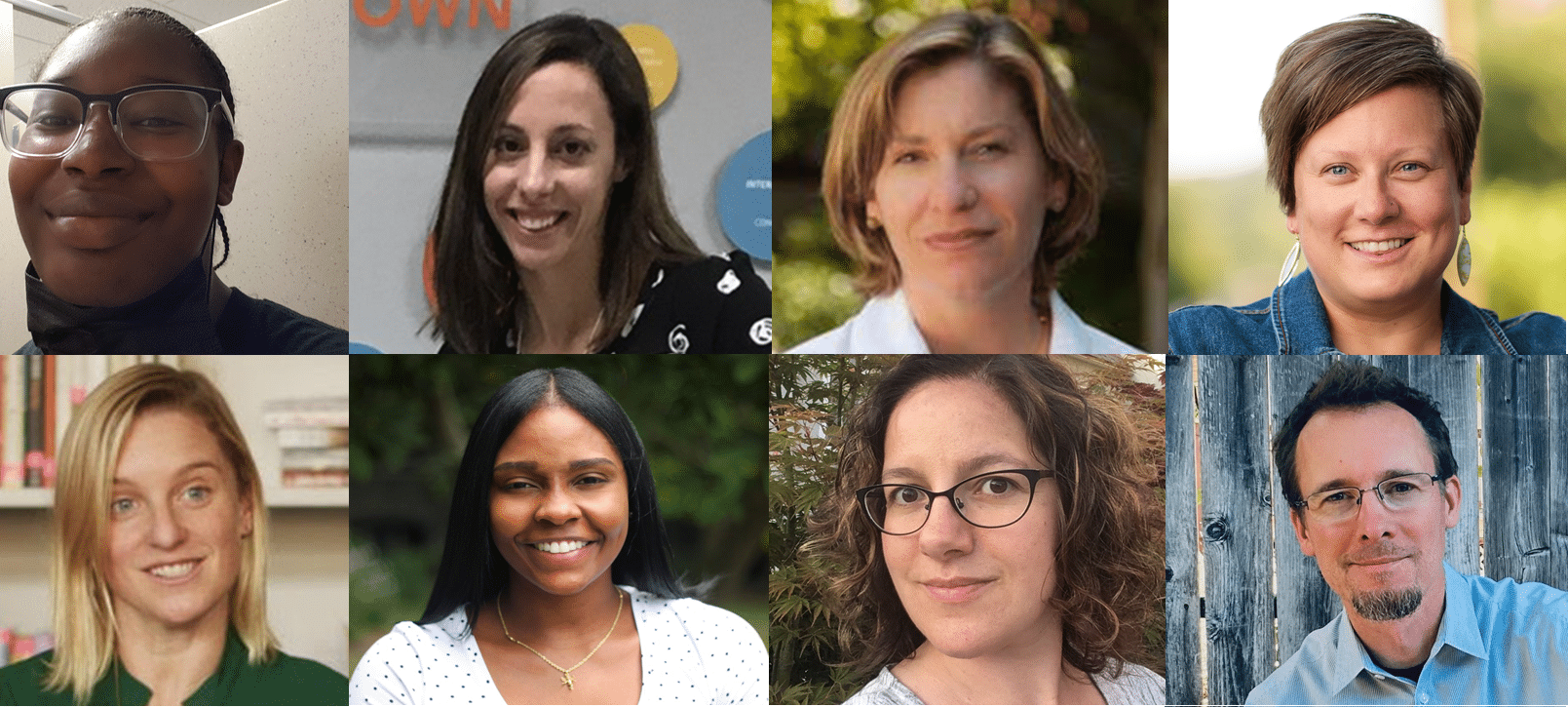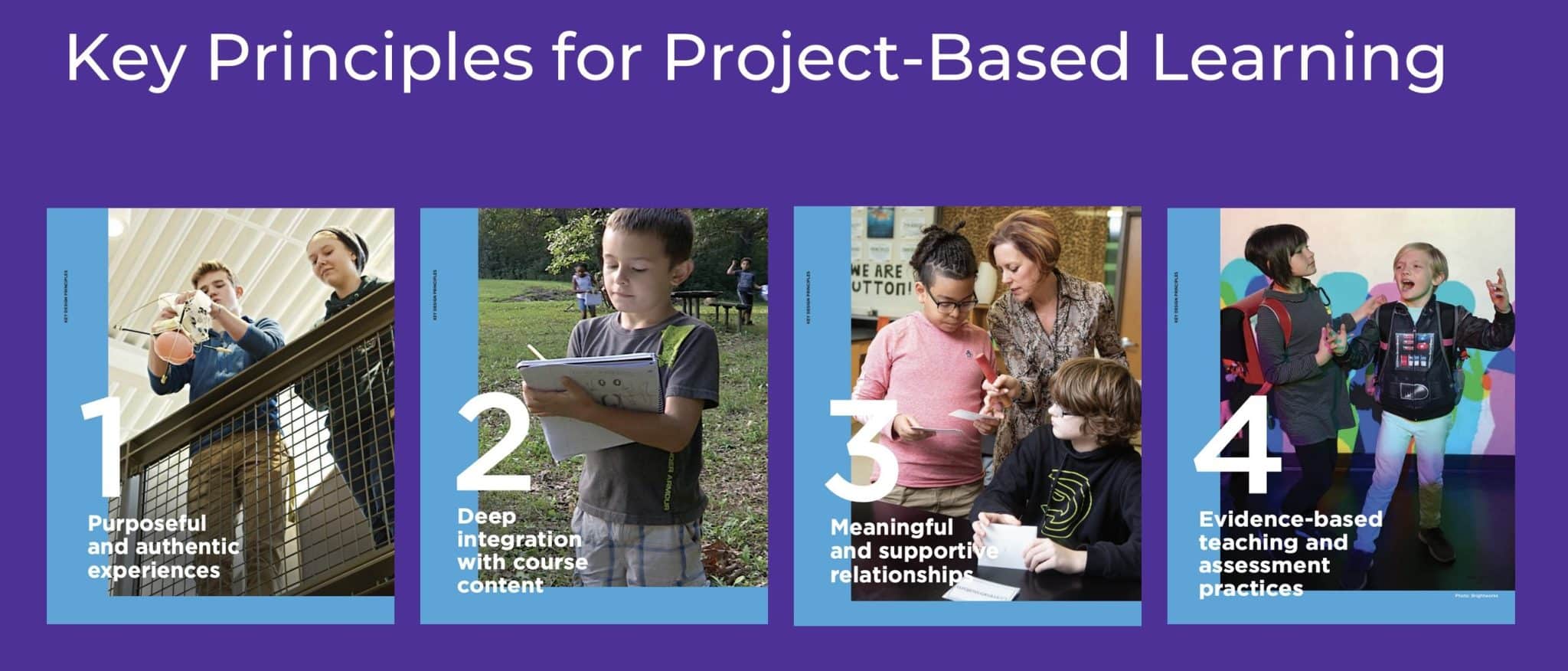Pairing Competency-Based Education with Project-Based Learning Makes for a Powerful Learning Experience
CompetencyWorks Blog

High school student Breonna Allah says attending Building 21 Allentown in Pennsylvania, which uses a competency-based and project-based learning model, means being seen and heard and having a deeply personal learning experience.
“My experience at Building 21 has been a lot different from other schools. It focuses more on me versus grouping everyone together. I like that we’re all seen as individual people.” Breonna told an audience of 150 people attending a recent webinar hosted by the Aurora Institute and Lucas Education Research.
The topic, “Better Together, Connecting Project-Based Learning and Competency-based Education,” drew inspiring stories, thought-provoking questions, and an overall rich conversation. I was so glad to be part of the discussion, the second in our series with the Aurora Institute on the topic.
Breonna’s description of how competency-based education (CBE) and project-based learning (PBL) set students up for a meaningful and personalized learning experience makes sense. Both CBE, in which learning is measured by demonstrating mastery rather than hours in the classroom, and PBL, in which students explore real-world problems and learn content and skills through projects, do the following:
- Connect what’s happening in school to the outside world and student interests
- Emphasize student reflection of and ownership over their work
- Use performance-based assessments
- Value and foster strong, positive relationships.
The Power of Pairing CBE and PBL
Christy Kingham, director of leadership and school design at Springpoint, which helps educators and leaders design and implement innovative school models, moderated the roundtable. She told a story about working at a New York City school, The Young Women’s Leadership School of Astoria, that used a competency-based model and then added PBL after seeing traditional forms of instruction weren’t supporting CBE. Christy explained that PBL provides more support for developing student agency.
Heather Harlen, founding teacher of Building 21, Allentown, shared with roundtable participants what they might see if they walk into a CBE-PBL classroom. “The essential questions, the culminating task, and the skills we’re developing are very clear from the outset,” Heather said. “There is a lot of choice and voice involved, whether that might be from different texts or modifications we need to make, or what competencies, at this point in the year, our students still need to develop.”
Heather’s description of what’s taking place at Building 21 Allentown made so many of us attending the webinar want to take a field trip to see it for ourselves!
We also heard from the panelists about the value of interdisciplinary learning within a CBE and PBL approach, and research we released at Lucas Education Research last year found that this can be an effective strategy. In one study examining the effectiveness of using a PBL curriculum that integrated social studies and early literacy curriculum, we found students in the course gained 5-6 months of learning in social studies and 2-3 months of learning in informational reading compared to their peers. In another study, we found significant impacts on science learning across students entering the program at all reading levels when the program integrated science skills with authentic texts.

Advice from Building 21
Doing this work is rewarding but not necessarily easy. The Building 21 team shared insights for those trying to create more opportunities for students to experience CBE and PBL. These tips include:
- Being thoughtful about the use of time
- Emphasizing relationships and school culture
- Creating an environment that allows for a shift in teacher and student mindsets
- Building partnerships and engaging the community
Ayris Sanders, director of lab schools for the Building 21 Network, said school leaders need to think hard about how they, and their teams, spend their time. “I would say one of the most important things that the leader has to do to pull this off is to make sure they’re creating the time to do it. And when I say the time—not just time from a scheduling perspective, or not just time for a one-off PD. You need to think about time through every aspect of the innovation,” she said. “So, how are you providing the time for ongoing professional development and training? How are you providing the time for support and coaching and pushing teachers to reflect?”
Ayris and her colleagues emphasized the critical nature of fostering strong relationships and a positive school culture and climate. One way Building 21 does this is through advisory periods in which students and teachers connect daily in academic and non-academic ways.
We’ve seen the value of tending to relationships and social and emotional learning (SEL) in our work at LER. For example, research into a ninth-grade English language arts curriculum that emphasizes social and emotional learning found that students using the curriculum reported more collaboration and authentic learning experiences. And a study of a sixth-grade PBL science curriculum that led to student achievement gains on multiple measures calls for teachers to tend to SEL by setting norms and expectations for collaboration and dialogue.
Ayris noted that CBE and PBL require a shift in mindsets around education. “We are truly shifting mindsets as we do this work. You have to create an environment that allows for that process to happen,” she said. “Allow the space for people, and support them, to fail forward and make mistakes and truly work through and iterate through this process.”
Breonna wisely noted that students need to be reminded of that too, as their past experiences were likely very different from a CBE-PBL model. The panelists, and those who gathered in breakout rooms afterwards, agreed it was critical to encourage all stakeholders to undergo a similar shift in mindsets and attitudes toward schooling.
Ideas for doing that include purposefully engaging families and community-based partners by engaging with them around projects, inviting them to public presentations, and connecting around out-of-school opportunities and internships.
Learn More
While we all learned a lot from the roundtable, there is still so much to explore. Our team at LER is working on a white paper outlining how competency-based education and project-based learning overlap, how they might differ, ways in which they can support each other, and best practices for implementing both. We’ll share that as soon as it’s available!
Additional resources you might want to check out in the meantime include:
- The Building 21 resource library
- Springpoint materials, particularly those describing key design principles for innovation
- The research page of the LER site
- The Aurora Institute’s many resources, including a recording of the webinar
Kristin De Vivo is the executive director of Lucas Education Research, a division of the George Lucas Educational Foundation. Previously, she served as vice president of research and validation at Scholastic Inc.